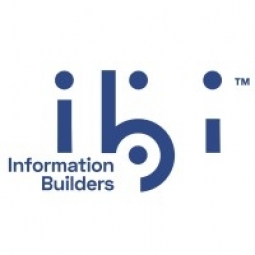Customer Company Size
Large Corporate
Region
- America
Country
- United States
Product
- iWay Service Manager
- iWay Developer Workbench, Pro Edition
- iWay Education
- iWay Professional Services
Tech Stack
- BPM-1 business process management technology
- Web services
Implementation Scale
- Enterprise-wide Deployment
Impact Metrics
- Cost Savings
- Productivity Improvements
Technology Category
- Application Infrastructure & Middleware - API Integration & Management
Applicable Industries
- Education
Applicable Functions
- Procurement
Use Cases
- Supply Chain Visibility
- Remote Asset Management
Services
- System Integration
- Software Design & Engineering Services
About The Customer
Yeshiva University is a distinguished institution of higher education with five campuses in New York City and one in Israel. Its rigorous academic program receives consistent international acclaim, and contributes to the university’s ranking as one the top 50 schools in the U.S. The university is committed to fiscal responsibility and efficiency in its information systems to effectively pursue its charter. The university recently deployed a single-use accounts (SUA) business service from JPMorgan Chase that automates payment, reporting, and reconciliation processes. The solution drives spending to preferred suppliers and promotes process efficiencies through electronic transactions.
The Challenge
Yeshiva University, a distinguished institution of higher education, was facing challenges in improving cash flow, reducing procurement costs, and increasing the float on accounts payable spending. The university also wanted to create a real-time interface between researchers and equipment by obtaining data from legacy systems. Fiscal responsibility is crucial to the university’s mission of combining the best of contemporary civilization and knowledge with the ancient traditions of Jewish law and life. The more efficient Yeshiva can make its information systems, the more capably it can pursue its charter. This philosophy of fiscal responsibility motivated Yeshiva to purchase iWay integration technology from Information Builders.
The Solution
Yeshiva deployed iWay Service Manager to automate critical financial and procurement processes. iWay also connects researchers with facilities in a more expedient way by instantly using grant dollars. One key iWay interface streamlines a procure-to-pay workflow process and is expected to save the institution hundreds of thousands of dollars annually. Another interface helps the university to maximize the use of its research facilities by enabling both internal and external personnel to use grant dollars instantly when they reserve university equipment. iWay began by mapping all the payment information in the SUA system to the university’s general ledger. Then iWay set up the necessary interfaces to JPMorgan’s financial gateway. Now, when an invoice is submitted from a vendor that has previously registered to receive SUA payments, the invoice is placed in a database table and picked up by iWay. Once Yeshiva’s accounts payable personnel approve the invoice, iWay forwards the transaction to JPMorgan, which has a four-hour window to process the order and release funds to the vendor’s unique SUA identification number.
Operational Impact
Quantitative Benefit

Case Study missing?
Start adding your own!
Register with your work email and create a new case study profile for your business.
Related Case Studies.

Case Study
Revolutionizing Medical Training in India: GSL Smart Lab and the LAP Mentor
The GSL SMART Lab, a collective effort of the GSL College of Medicine and the GSL College of Nursing and Health Science, was facing a challenge in providing superior training to healthcare professionals. As clinical medicine was becoming more focused on patient safety and quality of care, the need for medical simulation to bridge the educational gap between the classroom and the clinical environment was becoming increasingly apparent. Dr. Sandeep Ganni, the director of the GSL SMART Lab, envisioned a world-class surgical and medical training center where physicians and healthcare professionals could learn skills through simulation training. He was looking for different simulators for different specialties to provide both basic and advanced simulation training. For laparoscopic surgery, he was interested in a high fidelity simulator that could provide basic surgical and suturing skills training for international accreditation as well as specific hands-on training in complex laparoscopic procedures for practicing physicians in India.

Case Study
IoT platform Enables Safety Solutions for U.S. School Districts
Designed to alert drivers when schoolchildren are present, especially in low-visibility conditions, school-zone flasher signals are typically updated manually at each school. The switching is based on the school calendar and manually changed when an unexpected early dismissal occurs, as in the case of a weather-event altering the normal schedule. The process to reprogram the flashers requires a significant effort by school district personnel to implement due to the large number of warning flashers installed across an entire school district.

Case Study
Implementing Robotic Surgery Training Simulator for Enhanced Surgical Proficiency
Fundacio Puigvert, a leading European medical center specializing in Urology, Nephrology, and Andrology, faced a significant challenge in training its surgical residents. The institution recognized the need for a more standardized and comprehensive training curriculum, particularly in the area of robotic surgery. The challenge was underscored by two independent studies showing that less than 5% of residents in Italian and German residency programs could perform major or complex procedures by the end of their residency. The institution sought to establish a virtual reality simulation lab that would include endourological, laparoscopic, and robotic platforms. However, they needed a simulator that could replicate both the hardware and software of the robotic Da Vinci console used in the operating room, without being connected to the actual physical console. They also required a system that could provide both basic and advanced simulation training, and a metrics system to assess the proficiency of the trainees before they performed surgical procedures in the operating theater.

Case Study
Edinburgh Napier University streamlines long-distance learning with Cisco WebEX
• Geographically dispersed campus made in-person meetings costly and inconvenient.• Distance-learning programs in Malaysia, India, and China required dependable, user-friendly online tools to maximize interaction in collaborative workspaces.• Virtual learning environment required a separate sign-in process, resulting in a significant administrative burden for IT staff and limited adoption of collaboration technology.

Case Study
8x increased productivity with VKS
Before VKS, a teacher would spend a lot of time showing a group of 22 students how to build a set of stairs within a semester of 120 hours. Along with not leaving the teacher much time to provide one-on-one support for each student to properly learn carpentry, it also left a considerable amount of room for error. Key information would be misinterpreted or lost as the class was taught in the typical show-and-tell way.

Case Study
Scalable IoT Empowering GreenFlex's Sustainable Growth
GreenFlex, a company that supports sustainable development, decarbonization, and energy efficiency, faced several challenges in its quest to expand its business. The company needed to deploy a robust and sustainable IoT technology to support its growth. It was crucial for them to monitor and control devices at customer sites in a safe and reliable manner. They also needed to integrate devices across a range of communication protocols and gather and act on data to meet efficiency targets. GreenFlex had previously built IoT capabilities into its digital platform, GreenFlexIQ, to monitor and manage customer sites remotely. However, they soon realized that they needed a new platform to support their ambitions. They needed a platform that could scale to connect more devices for production management and make it easier for the operations team to manage devices in the field.







